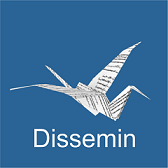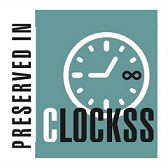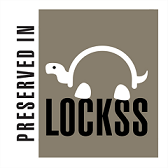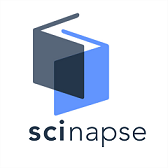Miundo Taswira katika Sitiari za Viungo vya Mwili: Mfano wa Methali za Kiswahili
Ikisiri
Makala hii ilichunguza nafasi ya miundo taswira katika kuunda sitiari zinazopatikana katika methali. Utafiti huu ukiwa umekitwa katika sitiari tambuzi unalenga kuchunguza vile tajriba zilizomwiliwishwa kama vile uwiano na mwendo zinavyoakisiwa katika mahusiano ya kiistiari yaliyomo katika methali za Kiswahili. Methali ni hazina kuu ya hekima ya utamaduni na hutegemea sitiari kupitisha dhana za kidhahania za kijamii, kimadili au kihisia. Uchunguzi huu unahoji kuwa sitiari hizi si nasibu ila huundwa kiutaratibu kwa miundo taswira inayotokana na tajriba za kimwili. Miundo taswira ina nafasi muhimu katika kuunda maana za methali hususan zinazotumia sitiari za viungo vya mwili. Miundo taswira huunda miundo ya kimsingi ambayo sitiari hujengeka, haswa sitiari tambuzi ambapo dhana moja hueleweka kwa kuihusisha na nyingine. Sitiari za viungo vya mwili hutegemea uzoefu alio nao binadamu na mwili wake. Miundo taswira husaidia kuunganisha tajriba za mwili kwa maadili ya kidhahania kama vile mamlaka, werevu, maadili au tabia ya jamii. Uandishi wa makala hii uliongozwa na nadharia ya muundo taswira kwa mujibu wa Lakoff na Johnson (1980). Mkabala wa utafiti ni wa kithamano, muundo wa kimaelezo. Eneo la utafiti ni kamusi ya methali za Kiswahili. Kundi lengwa la utafiti ni methali za Kiswahili. Sampuli ya methali 10 zenye sitiari za viungo vya mwili ziliteuliwa kimaksudi kutoka katika Kamusi ya Methali za Kiswahili ya King’ei na Ndalu (2008) ili kuchunguzwa. Data ilikusanywa kwa usomaji makini wa methali zilizomo katika kamusi teule ya utafiti. Mtafiti akanakili methali hizo na miundo taswira iliyomo ikachunguzwa. Matokeo ya utafiti yalibainisha kuwa dhana zisizoshikika hueleweka kupitia kwa sitiari za viungo vya mwili kwa sababu ya mitagusano iliyopo baina ya binadamu na mazingira yake. Isitoshe utafiti umeipanua pia taaluma ya isimu ya Kiafrika kwa kuziweka diskosi za methali za Kiswahili ndani ya muktadha wa kiakili mbali na kuchangia katika nadharia ya sitiari za lugha tofauti, semiotiki ya kitamaduni na uhusiano baina ya lugha, fikra na jamii.
Upakuaji
Marejeleo
Al-Saleh, T., Al-Shuaibi, J., Sharab, M., & Al-Momani, R. (2020). A cognitive analysis of head and heart metaphors in English and Spanish. International Journal of Arabic-English Studies, 20(2), 115–132.
Antle, A. N., Corness, G., & Bevans, A. (2011). Springboard: Designing image schema based embodied interaction for an abstract domain. In Whole body interaction (pp. 7-18). Springer London.
Basson, A. (2011). The path image schema as underlying structure for the metaphor moral life is a journey in Psalm 25. Old Testament Essays, 24(1), 19-29.
Duncan, N. M., Mudogo, B., & Mandillah, L. (2024). Conceptual mappings of metaphorical euphemisms in Ekegusii circumcision ceremonies. African Journal of Empirical Research, 5(4), 287–301. https://ajernet.net
Gallagher, S. (2005). How the body shapes the mind. Oxford University Press.
Gibbs, R. (2014). Embodied metaphor. The Bloomsbury companion to cognitive linguistics, 167, 184.
________. (2008). Images Schemas in conceptual development: What happened to the body? Philosophical psychology, 21(2), 231-239.
________. (2006). Metaphor interpretation as embodied simulation. Mind & Language, 21(3), 434-458.
__________. (2005). Embodiment and cognitive science. Cambridge University Press.
Guo, D., & Wang, H. (2018). The significance of image schema in embodied cognition. Philosophy Study, 8(8), 355–361. https://doi.org/10.17265/2159-5313/2018.08.002
Johnson, M. (2013). The body in the mind: The bodily basis of meaning, imagination, and reason. University of Chicago Press
__________. (1999). Philosophy in the flesh: The embodied mind and its challenge to Western thought. Basic Books.
Kovecses, Z. (2003). Metaphor and emotion: Language, culture, and body in human feeling. Cambridge University Press.
___________. (2002). Cognitive-linguistic comments on metaphor identification. Language and literature, 11(1), 74-78.
___________. (2002). Cognitive-linguistic comments on metaphor identification. Language and literature, 11(1), 74-78.
__________. (2010b). Metaphor and culture. In Acta Universitatis Sapientiae, Philologica, 2 (2). Pp197-220.
King’ei, K. na Ndalu, A. (2008). Kamusi ya methali. East African Educational Publishers.
Lakoff, G. & Johnson, M. (1980). Metaphors we live by. Chicago University Press.
Lakoff, G. (1993). The contemporary theory of metaphor. In A. Ortony (Ed.), Metaphor and Thought (pp. 202 251). Cambridge University Press.
Lakoff, G. (1996). Moral politics: What conservatives know that liberals don't. University of Chicago Press.
Lakoff, G., & Turner, M. (1989). More than cool reason: A field guide to poetic metaphor. University of Chicago Press.
Lakoff, G., Johnson, M., & Sowa, J. F. (1999). Review of Philosophy in the Flesh: The embodied mind and its challenge to Western thought. Computational Linguistics, 25(4), 631-634.
Lakoff, G., & Johnson, M. (1999). Philosophy in the flesh: The embodied mind and its challenge to Western thought. Basic Books.
Mandler, J. M., & Pagán Cánovas, C. (2014). On defining image schemas. Language and Cognition, 6(4), 510–532. https://doi.org/10.1017/langcog.2014.14.
Mittelberg, I. (2013). Balancing acts: Image schemas and force dynamics as experiential essence in pictures by Paul Klee and their gestural enactments. In Borkent, M., Dancygier, B. Language and the Creative Mind. Pp 342-325. CSLI Publications.
Stadler, M. (2020). 5 Cognitive linguistics II: Image schemata and conceptual metonymy. Cognitive Linguistics, 139-191.
Talmy, L. (2000). Toward a cognitive semantics, Vol. ll: Typology and process in concept structuring. The MIT Press.
TATAKI. (2013). Kamusi ya Kiswahili Sanifu. TATAKI
Turner, M. (1996). The literary mind: The origins of thought and language. Oxford University Press.
Velasco, O. I. D. (2001). Metaphor, metonymy and image-schemas: an analysis of conceptual interaction patterns. Journal of English Studies, (3), 47-64.
Wachowiak, L., Gromann, D., & Xu, C. (2023). The Image Schema VERTICALITY: Definitions-and Annotation Guidelines. In ISD.
Yu, N. (2009). From body to meaning in culture: Papers on cognitive semantic studies of Chinese. John Benjamins Publishing Company.
Zhu, Z. (2023). A literature review of the image schema theory and concepts of construction. International Journal of Languages, Literature and Linguistics, 9(6), 542–546.
Copyright (c) 2025 Murule Otipa Remmy, Akaka Lina, Mavisi Rose

This work is licensed under a Creative Commons Attribution 4.0 International License.




























